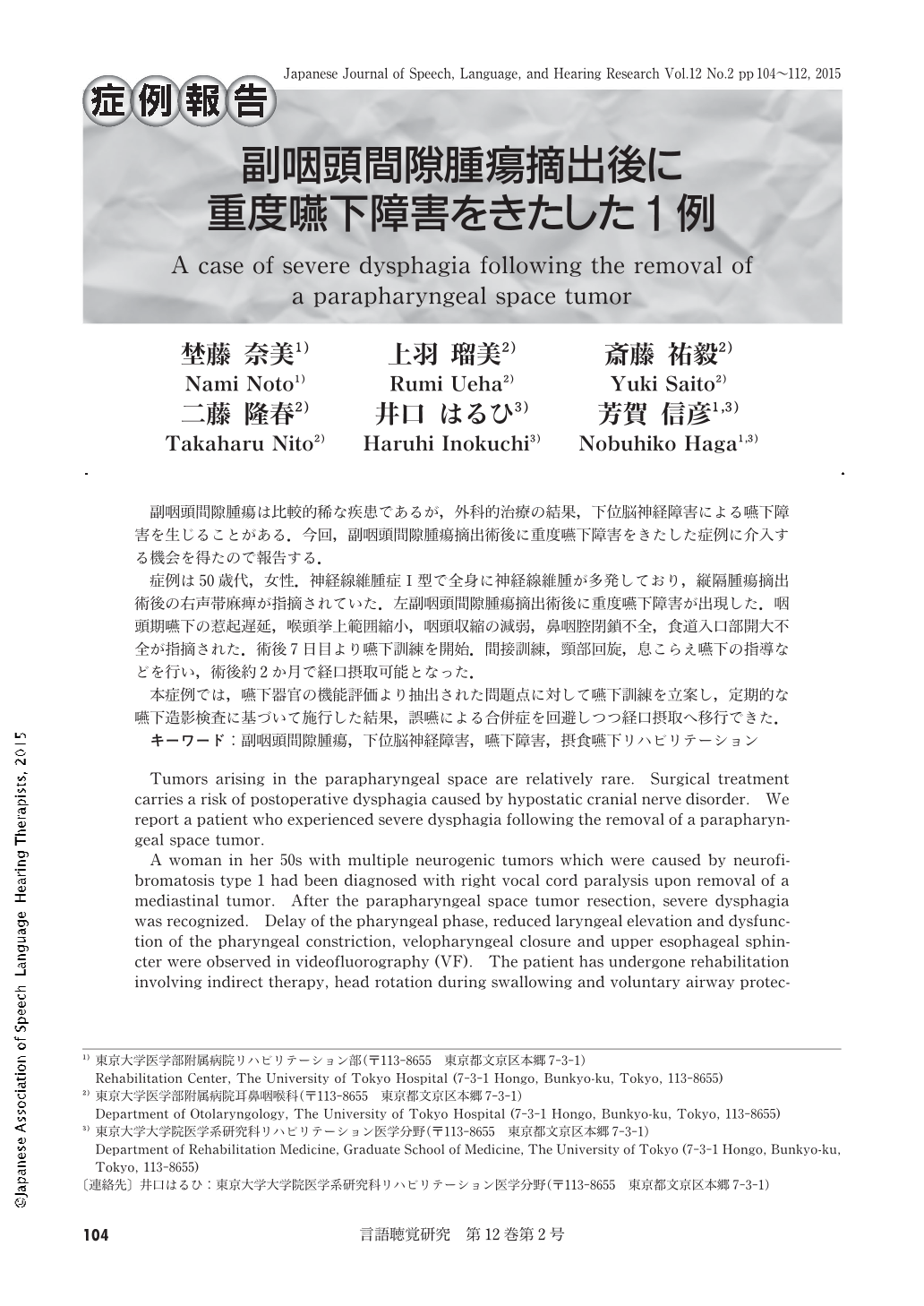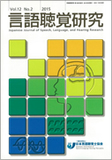Japanese
English
- 有料閲覧
- Abstract 文献概要
- 1ページ目 Look Inside
- 参考文献 Reference
副咽頭間隙腫瘍は比較的稀な疾患であるが,外科的治療の結果,下位脳神経障害による嚥下障害を生じることがある.今回,副咽頭間隙腫瘍摘出術後に重度嚥下障害をきたした症例に介入する機会を得たので報告する.
症例は50歳代,女性.神経線維腫症Ⅰ型で全身に神経線維腫が多発しており,縦隔腫瘍摘出術後の右声帯麻痺が指摘されていた.左副咽頭間隙腫瘍摘出術後に重度嚥下障害が出現した.咽頭期嚥下の惹起遅延,喉頭挙上範囲縮小,咽頭収縮の減弱,鼻咽腔閉鎖不全,食道入口部開大不全が指摘された.術後7日目より嚥下訓練を開始.間接訓練,頸部回旋,息こらえ嚥下の指導などを行い,術後約2か月で経口摂取可能となった.
本症例では,嚥下器官の機能評価より抽出された問題点に対して嚥下訓練を立案し,定期的な嚥下造影検査に基づいて施行した結果,誤嚥による合併症を回避しつつ経口摂取へ移行できた.
Tumors arising in the parapharyngeal space are relatively rare. Surgical treatment carries a risk of postoperative dysphagia caused by hypostatic cranial nerve disorder. We report a patient who experienced severe dysphagia following the removal of a parapharyngeal space tumor.
A woman in her 50s with multiple neurogenic tumors which were caused by neurofibromatosis type 1 had been diagnosed with right vocal cord paralysis upon removal of a mediastinal tumor. After the parapharyngeal space tumor resection, severe dysphagia was recognized. Delay of the pharyngeal phase, reduced laryngeal elevation and dysfunction of the pharyngeal constriction, velopharyngeal closure and upper esophageal sphincter were observed in videofluorography(VF). The patient has undergone rehabilitation involving indirect therapy, head rotation during swallowing and voluntary airway protection from the seventh postoperative day. Approximately two months later, the patient was able to achieve full oral intake.
Rehabilitation based on functional evaluation with periodic VF assessment was effective for our patient without causing aspiration pneumonia.

Copyright © 2015, Japanese Association of Speech-Language-Hearing Therapists. All rights reserved.


